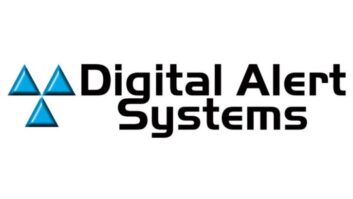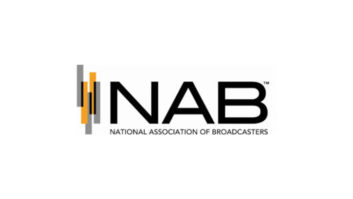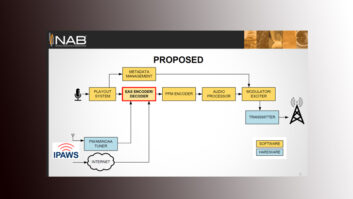KIXP is a new low-power FM radio station that has just gone on the air in Eastsound, Wash., on Orcas Island in the San Juan Island archipelago, near the Canadian border.
The licensee is StayAlert. Its business plan for the station comes with a twist: In addition to airing community programming, the non-profit service uses both the LPFM station and a Class C FM neighbor to broadcast alert messages. The LPFM uses standard RDS to place alerts in the car dashboard, and the full-power station uses StayAlert’s RDS2 open data application to carry alerts to public kiosks and personal data receivers at remote island locations not served by traditional infrastructure.
I asked President Allen Hartle to tell us more.
Radio World: Allen, many readers will know you from your work over the years at The Radio Experience, Broadcast Electronics and Jump2Go. What is StayAlert.org?
Allen Hartle: StayAlert is a Washington state non-profit founded by me and my wife, Liberte Pedicini. Its core mission is dedicated to serving public safety by developing emergency alerting technology based upon the RDS and RDS2 data standards. We are also interested in revising U.S. RDS/HD Radio metadata standards & practices with a focus on reducing potential driver distraction.
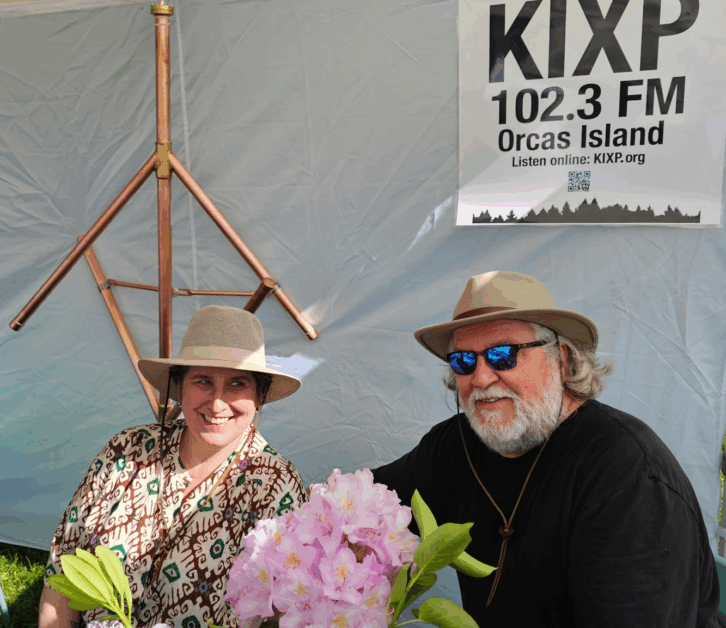
We began with installing our equipment on a partner station, 63 kW Class C station KWPZ, licensed to Crista Ministries. Its chief engineer, Aaron Hume, as well as Tim Vick and Garrett Duguay contributed significantly.
The RDS- and RDS2-compatible software and hardware was created by my dear friend and collaborator Joop Beunders. He was one of the creators of RDS and the new RDS2 standards. Before he passed away, he asked me to carry on his legacy of work regarding RDS, RDS2 and alerting.
RW: Now StayAlert has launched its own LPFM station. What is its format?
Hartle: The “Community” format is a station completely dedicated to the San Juan Islands community. We have an unusually large number of creative people who’ve chosen to live here. Our music library consists of close to 7,000 songs from artists connected to the islands.
Now that the heavy lifting is done and the signal is on, we are organizing volunteers who will produce original programming. KIXP will feature local history and the many people that play a major role in the community’s past/present/future.
We are also connected with the local history museum, The Orcas Center performing arts organization, fire and rescue and any non-profit that requests promotion. Online, we will assist local businesses with traditional advertising via underwriting and digital media.
RW: How does this station advance the goals of StayAlert?
Hartle: Technical redundancy, for starters. Our Class C partner is one regional signal. With the addition of KIXP, Eastsound now has two FMs providing StayAlert data. Additionally, the local in-car RDS displays StayAlert data in the receiver as well as our planned kiosks.
Key citizens of Eastsound are involved in the project and the new StayAlert resource it represents. Our island community is isolated, using a few underwater cables for electricity/telephone and Internet. Ferry boats are our main source of transportation. Our local non profits significantly take care of our residents in need, and having StayAlert live data installed at their public gathering facilities will be part of that.
Having KIXP also is super valuable as a test bed, where I can combine 30 years of RDS experience and products with the new StayAlert technology. I’ll be working with the major middleware companies, seeking integration collaboration.
I should mention the Cascadia Subduction zone, a major fault line off the Pacific Northwest coast, stretching from northern California to Vancouver Island. It’s a convergent plate boundary capable of producing powerful earthquakes, including “great earthquakes” of magnitude 9.0 or higher, and subsequent tsunamis. The last major earthquake on this fault was in 1700 and is overdue.
I look at StayAlert as a potential “tsunami alert system,” needed by the states of Washington and Oregon and by British Columbia. More than 43 tsunami structures are proposed for construction across coastal areas at a cost of $40 million. That would buy a LOT of RDS encoders!
RW: Please describe the air chain.
Hartle: I built the studio downtown — in the likeness of Northern Exposure but better — with our beautiful Pacific Recorders AMX-22 legacy console in the front window.
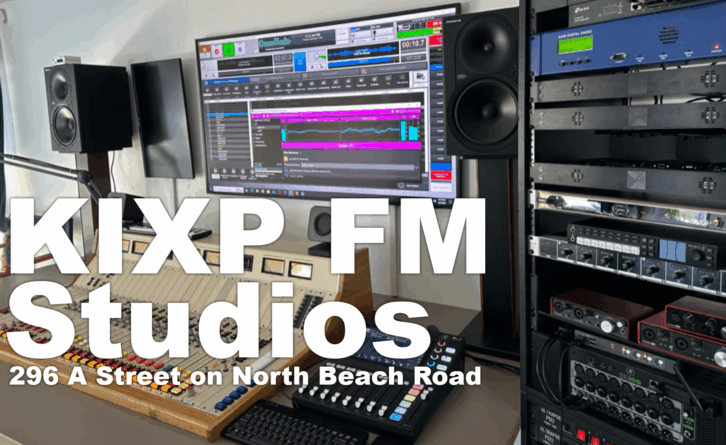
Seattle radio legend Bruce Murdock and his lovely wife donated that epic console and drove it from Seattle to the islands, delivering it into our studio space.
I am trying to keep everything as simple as possible, in order to involve the community as the organization develops. We use Nextkast radio automation. It’s powerful yet easy to use, and I love being able to talk to the developer Winston Potgieter. He’s a brilliant man with a powerful product and included metadata support for my Jump2Go JumpGate.
I can’t afford the time to have the automation or any sub system become a burden to operate. There just aren’t enough hours in the day.
We chose an Ecreso AiO series transmitter from our longtime RDS collaborator Worldcast Systems. The transmitter lives downtown at the studio. It is easy to learn and operate, including the built-in audio processing. Not having any direct competitors frees us from loudness considerations. We pick a preset and get on with our day. We have a clean and undistorted sound on the air.
The studio rooftop antenna was required to be directional, so engineering consultant Bert Goldman recommended Propagation Systems, which was a great decision. Bert and attorney Ernest Sanchez were invaluable in preparing the application. Even the FCC was helpful to us in preparing our application so we could serve our community.
RDS encoders are provided by Inovonics. Ben Barber continues to be the nicest guy in radio and contributed considerable time and resources to making sure the Inovonics 732 supported our project.
RDS2 encoders are by Worldcast. Christopher Poulain and team do their best to answer my questions as we work towards developing next-generation RDS2 applications.
RW: The website mentions expansion plans for the station.
Hartle: They are TBD. Whether we’re talking about translators or boosters, we have seven other island communities that could benefit from KIXP expanding. All locations have our island-wide Rock Island gigabit internet service, so there will be no challenges getting the audio there. I’m looking forward to hearing about future FCC filing windows.
RW: What else should we know?
Hartle: I couldn’t have gotten this far on this project or any other without help from others. Broadcast engineers are still my favorite people. How many people do we know who conduct their lives with a “failure is not an option” attitude?
I want to send a shout out to my lifelong friend and mentor Martin Hadfield, who’s responsible for believing in my various projects and lending a hand when needed. He is also responsible for kicking off acceptance of RDS in the U.S. as the technical director of Entercom.
And don’t forget John Casey, who today is the publisher of Radio World. He reached out to me to suggest that we use RDS for our billboard projects — that was in 1993!
